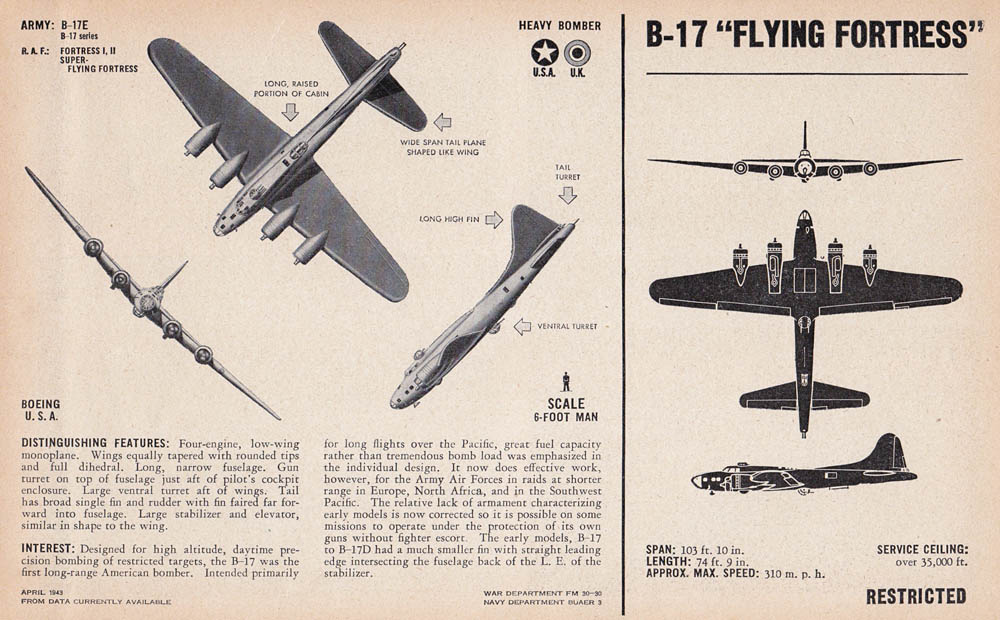U.S. War Department WWII Recognition Guide for the B-17E Flying Fortress:

DISTINGUISHING FEATURES: Four-engine, low-wing monoplane. Wings equally tapered with rounded tips and full dihedral. Long, narrow fuselage. Gun turret on top of fuselage just aft of pilot’s cockpit enclosure. Large ventral turret aft of wings. Tail has broad single fin and rudder with fin faired far forward into fuselage. Large stabilizer and elevator, similar in shape to the wing.
INTEREST: Designed for high altitude, daytime precision bombing of restricted targets, the B–17 was the first long-range American bomber. Intended primarily for long flights over the Pacific, great fuel capacity rather than tremendous bomb load was emphasized in the individual design. It now does effective work, however, for the Army Air Forces in raids at shorter range in Europe, North Africa, and in the Southwest Pacific. The relative lack of armament characterizing early models is now corrected so it is possible on some missions to operate under the protection of its own guns without fighter escort. The early models, B–17 to B–17D had a much smaller fin with straight leading edge intersecting the fuselage back of the L.E. of the stabilizer.









